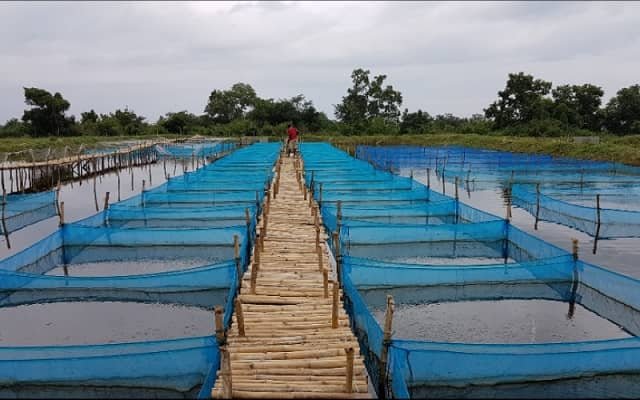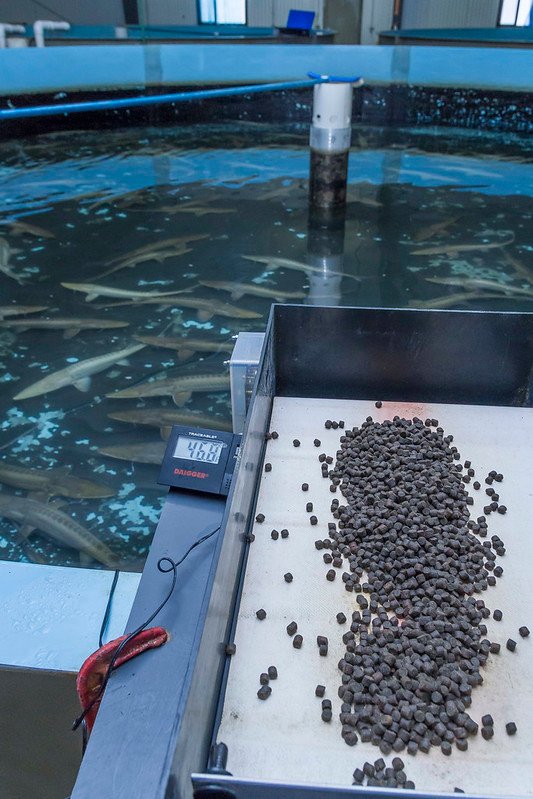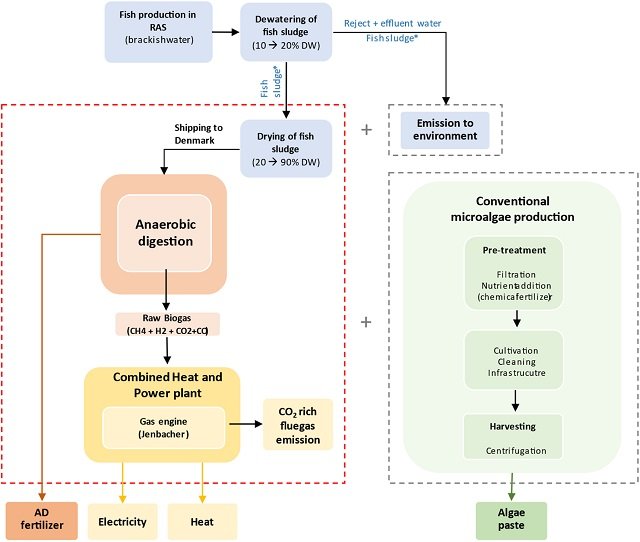
The aquaculture industry generates a significant amount of waste, particularly aquaculture sludge, a mixture of uneaten food and fish feces. These sludges represent both an environmental challenge and a missed opportunity. However, innovative approaches are emerging to transform these wastes into a valuable resource within a circular economy.
A study published in Reviews in Aquaculture by scientists from the Norwegian Veterinary Institute, the Institute of Marine Research, SINTEF Ocean, the Institute of Marine Ecosystem and Fishery Science, and the University of Hamburg explores the potential of using sludge from salmonid aquaculture as a food substrate for invertebrates such as insects and marine polychaetes, ultimately creating a more sustainable and efficient aquaculture system.
The Challenge of Aquaculture Sludge
The growing global demand for seafood products has led to an increase in aquaculture production. However, this rapid growth has raised concerns about environmental impacts, including the discharge of large volumes of fish sludge into surrounding waters. These sludges contain valuable nutrients such as proteins and lipids but also harbor potential dangers such as pathogens and contaminants.
The research focuses on the use of fish sludge from land-based aquaculture production systems, including flow-through and recirculation systems (RAS), in both freshwater, brackish, and marine environments. The main interest is in Atlantic salmon (Salmo salar) and rainbow trout sludge, cultured in Norway and Chile.
A Circular Solution: Feeding Invertebrates
A promising approach to mitigate the environmental impact of aquaculture sludge is to use it as a food source for invertebrates. Insects such as black soldier flies (BSF) and marine polychaetes have shown the ability to effectively convert fish sludge into high-quality proteins and lipids. These invertebrates can then be incorporated into animal feed, creating a closed-loop system that minimizes waste and maximizes resource utilization.
Addressing Potential Risks
While this approach offers significant potential, the associated risks must be carefully considered. Key concerns include:
Biological Risks
- The literature review revealed the need for more knowledge about the fate of biological risks through the ingestion of fish sludge by invertebrates.
- Studies have shown that food or substrate is an important determinant of the bacterial community in insects, and some bacterial species become dominant within the insects’ gut.
- Some pathogens have been shown to transfer from contaminated substrates to the surface and gut of insects, although the levels recovered from larvae, pupae, and adults were low.
- The study indicates that prions, in the unlikely event they enter fish sludge, would not exceed the number of prions introduced during production, and adequate inactivation would depend on prolonged autoclaving at 131°C-134°C.
- The presence of all viruses, bacteria, and parasites assessed in a raw material would be negligible after heating for ≥ 25 minutes at ≥ 85°C.
Chemical Risks
- Higher levels of Fe were found in a study characterizing sludge from beneath cages in lakes and seas, with Fe levels up to 27 g/kg.
- Zn levels in the sludge ranged from 100 to 1000 mg/kg dry matter, although some studies have reported higher levels.
- Non-essential elements such as Cd and Hg have been shown to bioaccumulate, and As tends to accumulate as well.
- Insects fed with high inclusion rates of fish sludge contained elevated levels of Cd, Pb, Hg, and As, where As and Hg in the insects exceeded the ML for feed materials when 80% and 100% sludge inclusions were used, respectively.
- Dioxins and dioxin-like PCBs accumulated in black soldier fly larvae, with a bioaccumulation factor exceeding 2.
- PFAS were found to accumulate in black soldier fly larvae in a dose-dependent manner when fed enriched substrates.
- Pesticides such as boscalid, etofenprox, and fluopyram transferred from the substrate to black soldier fly larvae.
- Studies indicate no active absorption of mycotoxins in the insects, and that degradation or excretion occurred.
- Veterinary drugs found in larvae after exposure were generally low, except for doxycycline, which was relatively high in the larvae.
Regulatory Obstacles
Current EU regulations prohibit the use of aquaculture sludge as feed for livestock due to concerns about potential dangers and insufficient scientific data.
Knowledge Gaps and Future Research
This review highlights significant knowledge gaps that must be addressed to fully harness the potential of fish sludge as a valuable food resource. Key research areas include:
Stay Always Informed
Join our communities to instantly receive the most important news, reports, and analysis from the aquaculture industry.
- Comprehensive Risk Assessment: Thorough research into the chemical and biological composition of aquaculture sludge is crucial to identify and quantify potential risks.
- Invertebrate Performance and Feed Quality: Studies are needed to evaluate the growth, development, and feed conversion efficiency of invertebrates fed with aquaculture sludge, as well as the nutritional quality of the resulting biomass.
- Risk Mitigation Strategies: Research should focus on developing effective treatment methods for aquaculture sludge to minimize potential hazards and ensure feed safety.
- Development of a Regulatory Framework: A solid regulatory framework is needed to ensure the safe and sustainable use of aquaculture sludge in animal feed, taking into account specific risks and benefits.
Conclusion
There is significant potential to use aquaculture sludge as food for invertebrates in circular bioproduction systems, but more research is needed to understand and mitigate the biological and chemical risks involved.
By addressing the identified knowledge gaps and developing appropriate risk mitigation strategies, this approach could contribute to a more responsible and environmentally efficient food production system. This study adds to other efforts in valorizing aquaculture sludges for microbial protein production.
Contact
Andreas Hagemann
Department of Fisheries and New Biomarine Industry, SINTEF Ocean
Trondheim, Norway
Email: andreas.hagemann@sintef.no
Reference (open access)
Pettersen, K. S., Sele, V., Araujo, P., Belghit, I., Benestad, S. L., Bernhoft, A., Booth, A. M., Eriksen, G. S., Farkas, J., Handå, A. H., Hansen, B. H., Helgesen, K. O., Holst-Jensen, A., Johannessen, G. S., Liland, N. S., Lundebye, K., Malzahn, A. M., Nilsen, H., Nordtvedt, T. S., . . . Hagemann, A. (2025). Fish Sludge as Feed in Circular Bioproduction: Overview of Biological and Chemical Hazards in Fish Sludge and Their Potential Fate via Ingestion by Invertebrates. Reviews in Aquaculture, 17(1), e12996. https://doi.org/10.1111/raq.12996
Editor at the digital magazine AquaHoy. He holds a degree in Aquaculture Biology from the National University of Santa (UNS) and a Master’s degree in Science and Innovation Management from the Polytechnic University of Valencia, with postgraduate diplomas in Business Innovation and Innovation Management. He possesses extensive experience in the aquaculture and fisheries sector, having led the Fisheries Innovation Unit of the National Program for Innovation in Fisheries and Aquaculture (PNIPA). He has served as a senior consultant in technology watch, an innovation project formulator and advisor, and a lecturer at UNS. He is a member of the Peruvian College of Biologists and was recognized by the World Aquaculture Society (WAS) in 2016 for his contribution to aquaculture.




